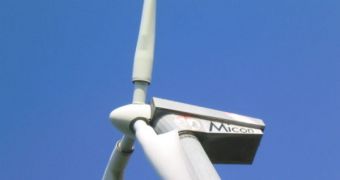The world's second largest wind-turbine manufacturer, Fairfield, CT-based GE Energy has recently acquired the famous, Trondheim, Norway-based ScanWind, a company that specializes in groundbreaking technology related to using wind for producing electrical energy. One of the most promising innovations that ScanWind is currently testing is a type of wind turbine that completely lacks gears, devices usually used inside such generators to keep the blades in tune with the intensity of the wind. With this purchase, GE hopes to enter the booming, offshore wind-energy market.
Technology Review reports that the Norwegian company has been testing its new blades in Norway since 2003, and that results are promising. In addition to the lower manufacturing costs for the gearless turbines, the costs associated with operating them are also far lower than those of running regular such generators. When turbines are built at sea, dispatching engineers to repair them is a very costly procedure, and one that is fraught with risks. Because there are not many things that can go wrong with the new design, downtimes are also considerably reduced.
The blades power up the electricity generators through a revolutionary direct-drive system, which enables the turbine to boast an output of about 3.5 megawatts. GE now plans to augment the ScanWind design, by enriching the initiative with its extensive knowledge of on-shore wind farming, as well as with remote monitoring and sensing equipment, which would ensure that the generators are always in mint condition. The final plan is to provide customers with a cheap, highly effective instrument, able to make the most out of the wind conditions of the place where it will be installed.
Regularly, in average turbines, many wheels and shafts convert the rotations of the blades, about 15 to 20 per minute, into about 1,800 rpm, for the normal, 1-megawatt generator. But this complex and cumbersome design also means that, if one of the small wheels is to malfunction, or jump off the axis, then the entire ensemble goes off-line, and grinds to a halt. This would mean huge losses for the owners of the turbines, and therefore it must be avoided. If engineers run constant checks, then downtimes in the turbine's operations scheduled also translate into lost money.

 14 DAY TRIAL //
14 DAY TRIAL //